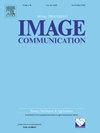基于非凸低秩和全广义变分的高光谱混合噪声去除
IF 2.7
3区 工程技术
Q2 ENGINEERING, ELECTRICAL & ELECTRONIC
引用次数: 0
摘要
为了在去除高光谱图像混合噪声的同时更好地保留高光谱图像的结构特征,提出了一种基于非凸低秩(NLR)和总广义变差(TGV)最小化的高光谱图像去噪方法。所提出的NLRTGV求解器紧密结合了TGV正则化、非凸核范数和1-范数的优点。具体来说,采用保持空间结构特征的TGV正则化器来消除高斯噪声和防止楼梯伪影。非凸惩罚的使用是为了探索谱的低秩特性,这有助于抑制稀疏噪声并保留主要数据成分。此外,我们进一步采用了1范数正则化来检测稀疏噪声,包括脉冲噪声、截止时间和条纹。在计算上,结合迭代重加权1算法、奇异值收缩法和原对偶框架,详细构造了一种改进的乘子交替方向法来解决由此产生的优化问题。最后,在模拟和真实的HSI数据集实验中,我们提出的方法在混合噪声去除和细节特征保留方面表现出出色的去噪性能,优于现有的最先进的竞争对手。本文章由计算机程序翻译,如有差异,请以英文原文为准。
Hyperspectral mixed noise removal using nonconvex low-rank and total generalized variation
To better preserve the structural features while removing the mixed noise in hyperspectral image (HSI), this paper presents a novel HSI denoising method based on nonconvex low-rank (NLR) and total generalized variation (TGV) minimization. The proposed NLRTGV solver closely incorporates the advantages of TGV regularization, nonconvex nuclear norm, and -norm. More specifically, the TGV regularizer, which maintains the spatial structure features, is adopted to eliminate Gaussian noise and prevent the staircase artifacts. The usage of nonconvex penalty is to explore the spectral low-rank properties, which contributes to suppress the sparse noise and preserve the major data components. Besides, we further employ the -norm regularization to detect the sparse noise that includes impulse noise, deadlines and stripes. Computationally, by combining the iteratively reweighted algorithm, singular value shrinkage method and primal-dual framework, we construct in detail a modified alternating direction method of multipliers to solve the resulting optimization problem. Finally, as evidently demonstrated in both simulated and real-world HSI datasets experiments, our proposed approach shows the outstanding denoising performance in terms of mixed noise removal and detail features preservation, over the existing state-of-the-art competitors.
求助全文
通过发布文献求助,成功后即可免费获取论文全文。
去求助
来源期刊

Signal Processing-Image Communication
工程技术-工程:电子与电气
CiteScore
8.40
自引率
2.90%
发文量
138
审稿时长
5.2 months
期刊介绍:
Signal Processing: Image Communication is an international journal for the development of the theory and practice of image communication. Its primary objectives are the following:
To present a forum for the advancement of theory and practice of image communication.
To stimulate cross-fertilization between areas similar in nature which have traditionally been separated, for example, various aspects of visual communications and information systems.
To contribute to a rapid information exchange between the industrial and academic environments.
The editorial policy and the technical content of the journal are the responsibility of the Editor-in-Chief, the Area Editors and the Advisory Editors. The Journal is self-supporting from subscription income and contains a minimum amount of advertisements. Advertisements are subject to the prior approval of the Editor-in-Chief. The journal welcomes contributions from every country in the world.
Signal Processing: Image Communication publishes articles relating to aspects of the design, implementation and use of image communication systems. The journal features original research work, tutorial and review articles, and accounts of practical developments.
Subjects of interest include image/video coding, 3D video representations and compression, 3D graphics and animation compression, HDTV and 3DTV systems, video adaptation, video over IP, peer-to-peer video networking, interactive visual communication, multi-user video conferencing, wireless video broadcasting and communication, visual surveillance, 2D and 3D image/video quality measures, pre/post processing, video restoration and super-resolution, multi-camera video analysis, motion analysis, content-based image/video indexing and retrieval, face and gesture processing, video synthesis, 2D and 3D image/video acquisition and display technologies, architectures for image/video processing and communication.
 求助内容:
求助内容: 应助结果提醒方式:
应助结果提醒方式:


